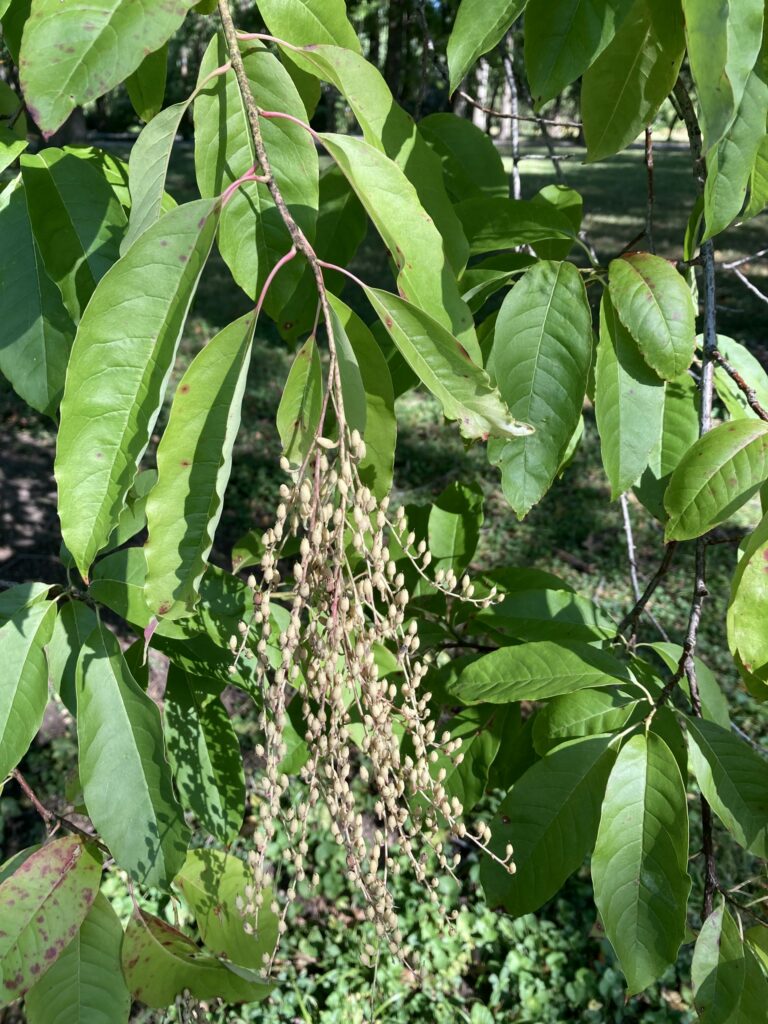By Mark Halpin, Forestry Manager
Oxydendrum arboreum, sourwood, is native to the American south, its range only approaching Missouri’s southeast border, but is often treated as a “near native.” There is an exceptional grove of sourwood in the northwest corner of Tower Grove park but otherwise, local specimens are usually lackluster. A trip to the Smoky Mountains will reveal this plant in all of its true glory – 40-60 feet tall, and with a glossy, burgundy leaf in fall. In our area, adequate drainage and some protection are in order – it is intolerant of pollution and drought. While the Missouri Botanical Garden’s website lists it as full sun – and it certainly is in the mountains of North Carolina and Tennessee – the specimens in Tower Grove get quite a bit of shade. Make of that what you will, and keep in mind that planting this tree here is a roll of the dice.
Although its ornamental characteristics are admirable, it is honey for which this tree is most prized. Like the tupelo trees (Nyssa) whose range somewhat overlaps sourwood’s, you will often find single-flower honey from the sourwood tree that is much prized as a delicacy. Its sweet-smelling, white flowers are hugely popular with bees and humans alike, endearingly called “angel fingers”, and closely resembling Lilly-of-the-Valley. Oxydendrum thrives in exactly the same area as many Rhododendrons. Both are popular in St. Louis gardens, and neither ever quite reach their fullest potential here. I used to think I had seen some nice specimens of these plants in St. Louis, until my first drive along the Blue Ridge Parkway when I saw what they were actually supposed to look like.
Luckily, the flower times of these two plants do not coincide, for Rhododendron honey is toxic, containing grayanotoxins. It is typically discarded immediately by modern apiarists, but this so-called “mad honey” has a long and interesting history of accidental and intentional ingestion in the ancient world, being used as a medicine, recreational drug and weaponized toxin. In what is certainly one of history’s most mean-spirited practical jokes, Mithridates VI, “The Poison King” of what is now Turkey, in the 1st century BCE, won a battle against the Romans by staging a fake retreat and leaving bowls of mad honey behind. The hungry Romans devoured it, fell into a stupor, and were easily overcome when Mithridates’ soldiers returned. (This is not what earned him his poisonous moniker though; he famously consumed sublethal doses of various poisons to render himself immune to them, for fear of assassination. I imagine his banquet guests often used the “we already ate” excuse when dinner and drinks were being served…)
But I digress significantly – sourwood is also known as “sorrel tree”, sharing a name with both true sorrel (Rumex) and wood sorrel (Oxalis, a very common weed in our area and often mistaken for clover.) All three contain oxalic acid, which has a sharply acidic, lemony taste which is quite pleasant (wood sorrel is the tastiest “edible weed” I have yet to encounter). All have been used to apply a zesty flavor to dishes and drinks, and “sorrel tree” teas were once a popular medicine and tonic in Appalachia.




